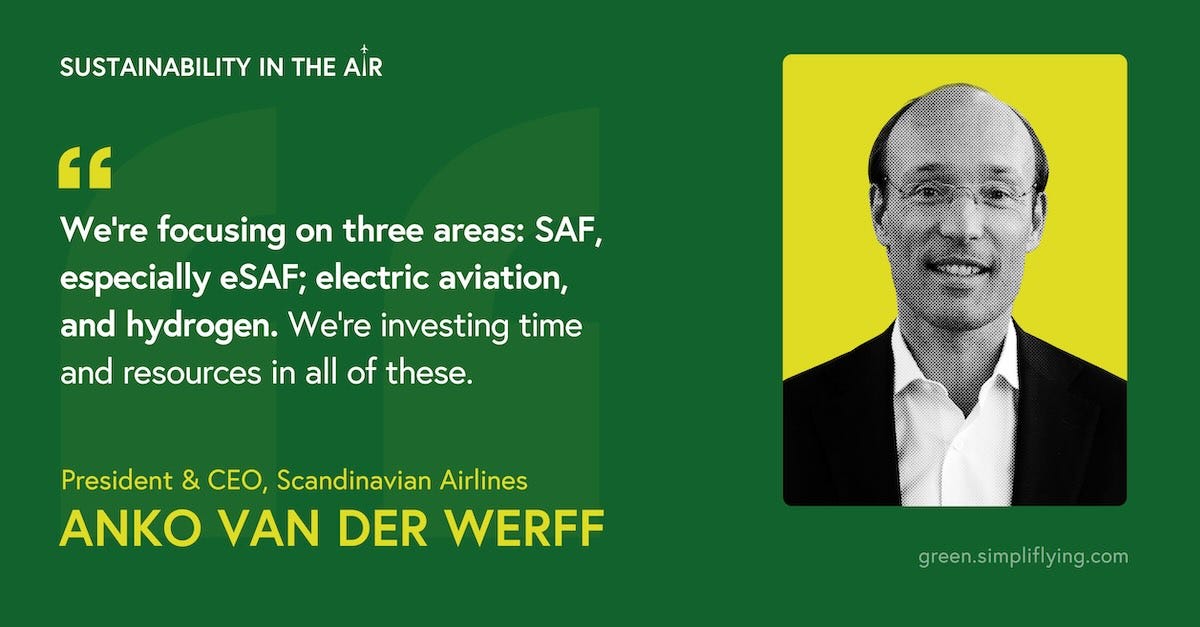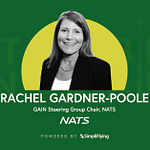In this episode of our ‘Sustainability in the Air’ podcast, Shashank Nigam, CEO of SimpliFlying, speaks with Anko van der Werff, President & CEO of Scandinavian Airlines (SAS). Van der Werff shares SAS’s ambitious sustainability initiatives, the unique environmental consciousness of Scandinavia, and the airline’s plans to lead the charge in sustainable aviation.
Here are the key highlights of the conversation:
Scandinavia’s unique environmental consciousness (2:37)
The Conscious Traveler program and gamification of sustainability (14:40)
Electric aviation and the Heart Aerospace partnership (23:50)
SAS’s three-pillar approach to sustainable aviation (27:10)
Moving away from carbon offsetting (34:25)
Challenges and opportunities in sustainable aviation (36:58)
Rapid Fire! (40:37)
Keep reading for a quick overview of the episode.
On September 1, 2024, SAS officially joined the SkyTeam alliance, following its exit from the Star Alliance. This also comes on the heels of the airline’s emergence from Chapter 11 bankruptcy protection in the US. The transition to SkyTeam is part of a broader restructuring strategy for SAS, which includes Air France-KLM acquiring a 19.9% stake in the airline. As SAS navigates these changes, it also aims to position itself at the forefront of sustainable aviation.
Why Scandinavian environmental consciousness matters
SAS’s environmental strategy is deeply rooted in the unique Scandinavian consciousness and the vital role aviation plays in the region. The airline’s approach is shaped by a culture that has long prioritised sustainability and a geography that necessitates air travel.
Van der Werff explains: “Scandinavia is truly different. I’m objective; I’m not Scandinavian by birth. But you notice that it’s in their DNA. They live so much more with the outdoors. They’re so much more respectful of the outdoors than I think anywhere that I’ve seen where I’ve lived.”
This environmental consciousness translates into a holistic approach to sustainability that goes beyond mere compliance. Twenty years ago, Scandinavian corporate clients were already demanding annual sustainability reports from airlines, a practice that was ahead of its time. However, the geography of Scandinavia also means that aviation is an essential service rather than a luxury.
Van der Werff notes: “When you look at the countries themselves and just look at the geography, both Norway and Sweden are very elongated countries, big countries, big land masses. And then Norway, on top of that, has fjords and mountains. Aviation is a part of society. It’s not looked upon as, yeah, I don't know. It's a need, maybe put it positively.”
This duality – a deep respect for the environment coupled with a genuine need for air travel – informs SAS’s nuanced approach to sustainability.
Four pillars of SAS’s sustainability strategy
1. The Conscious Traveler Program and its impact
At the heart of SAS’s sustainability efforts is its Conscious Traveler initiative under its EuroBonus loyalty program. The initiative aims to educate passengers about sustainable travel and incentivise eco-friendly choices through a 10-step process that rewards passengers for their sustainability efforts.
The program includes features such as points for purchasing biofuel, the option to donate EuroBonus points to sustainability projects, and the ability to opt-out of in-flight meals to reduce food waste.
Van der Werff notes the program’s impact:
“Nearly 100,000 people have taken steps toward sustainability [through the Conscious Traveler program], with nearly 6,000 to 7,000 completing all 10 steps. Together, they’ve reduced emissions equivalent to 500 flights between London and Copenhagen.
While it may seem small in the grand scheme of things, it’s a positive start. We’ve also seen an increase in passengers buying biofuel, from less than 0.5% to about 1.5%-2% since we launched Conscious Traveler. It’s still low, but it’s a step in the right direction.”
2. The three-pillar approach to sustainable aviation
SAS is pursuing a three-pillar approach to sustainable aviation, focusing on Sustainable Aviation Fuel (SAF), electric aviation, and hydrogen technology. Van der Werff emphasises that each of these pillars faces significant technological and economic challenges.
The first pillar, focusing on SAF, especially e-fuels, acknowledges the current low availability of SAF and its high cost. Van der Werff emphasises the need for the industry to collectively increase production and reduce costs.
Electric aviation forms the second pillar of SAS’s sustainability strategy, which Van der Werff views as a 5-10 year project. The airline is partnering with Heart Aerospace, which is developing a 30-seater hybrid-electric aircraft. SAS envisions potential applications for electric aircraft in remote areas, ambulance services, cargo operations, and eventually passenger transport.
The third pillar of SAS’s approach is hydrogen technology. The airline is collaborating with Airbus on hydrogen aviation research, focusing primarily on solving the logistical challenges associated with this technology. These include producing green hydrogen in sufficient volumes and developing efficient methods to transport it from production sites to airports.
3. Going electric
In 2023, SAS sold tickets for its maiden electric-powered flight scheduled for 2028. The move garnered significant attention, with tickets being sold out almost immediately.
The initiative is part of the airline’s partnership with Heart Aerospace and represents a significant bet on the future of electric aviation. While the current focus is on 30-seater planes, SAS sees this as a crucial first step towards larger electric aircraft that could serve a wider range of routes.
“If Anders [Forslund] and the [Heart Aerospace] team crack the code on having an electric aircraft out there in a number of years that flies for a few hundred kilometres on full electric, or double the kilometres on hybrid, then at least we’ve proven that it works. And then we got to scale up production of those aircraft to stretch it to a 50-seater and then eventually to 100-seaters.”
4. Disavowing carbon offsets
In a significant shift, SAS has decided to move away from carbon offsetting programmes. This decision reflects a growing scepticism about the effectiveness of offsetting and a commitment to more direct emissions reduction measures.
Van der Werff explains: “We’re moving away from it because we have no confidence and this is again where I think Scandinavia as a whole is just ahead of the curve. Scandinavia looks at offsetting as greenwashing. It is not real. It is in the end not driving anything to zero.”
As SAS joins the SkyTeam alliance, it sees opportunities for collaboration on sustainability efforts with partner airlines. Van der Werff notes:
“When I look at who is already using, who is buying most SAF in the world as a percentage, then Air France-KLM and us are number one and two. So I think it’s great to see that the number one and two airlines in the world are teaming up.”
‘Sustainability in the Air’ is the world’s leading podcast dedicated to sustainable aviation. Through in-depth conversations with top aviation leaders, we break through the clutter and provide a clear roadmap for a net-zero future.
For October 2024, we’re pleased to feature SITA as our exclusive Sponsor of the Month. SITA is a global IT provider for the air transport industry, helping airlines navigate complex environmental regulations. Discover how their Eco Mission tool can simplify compliance, reduce costs, and provide real-time insights to support your sustainability goals.













